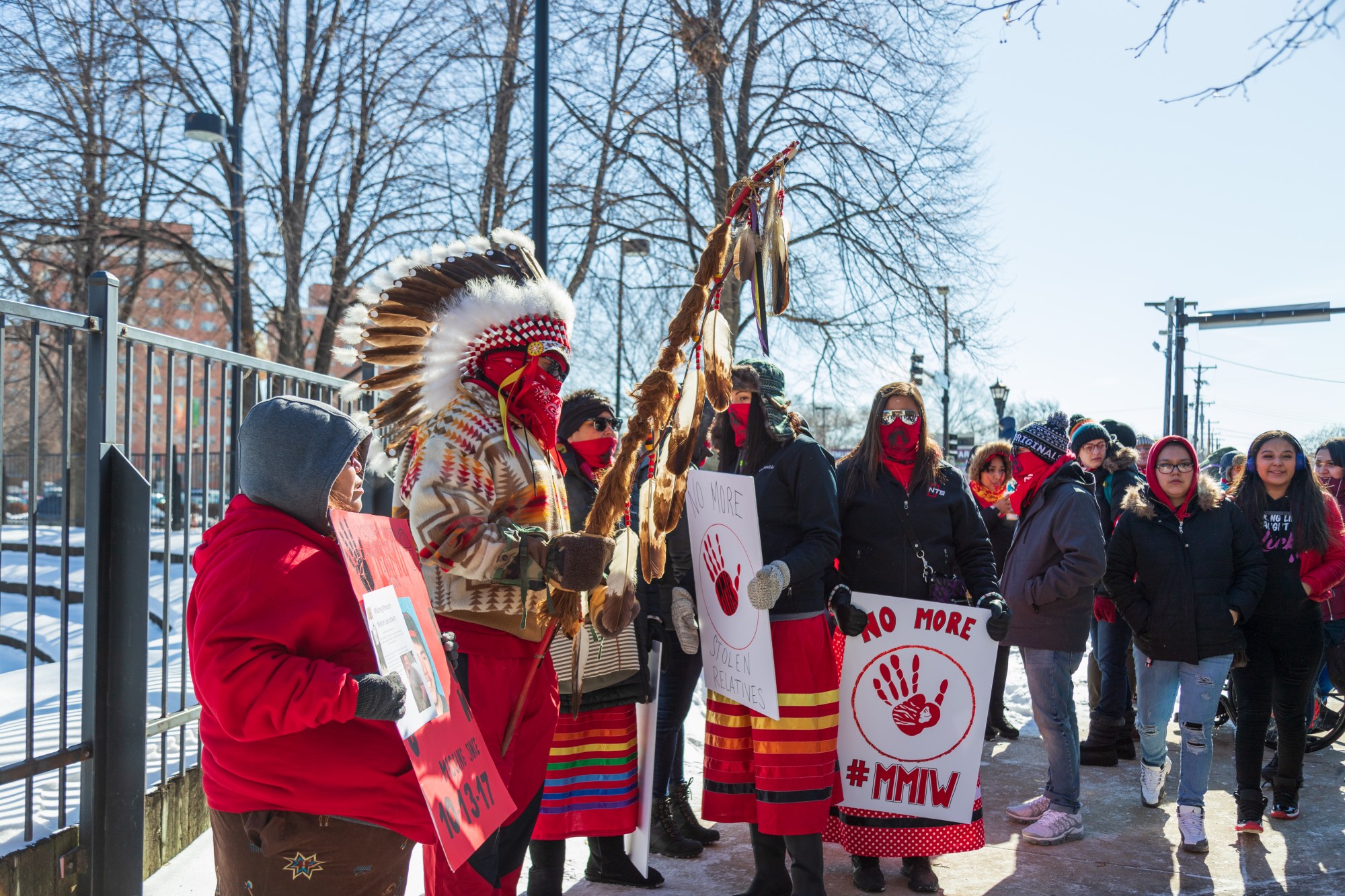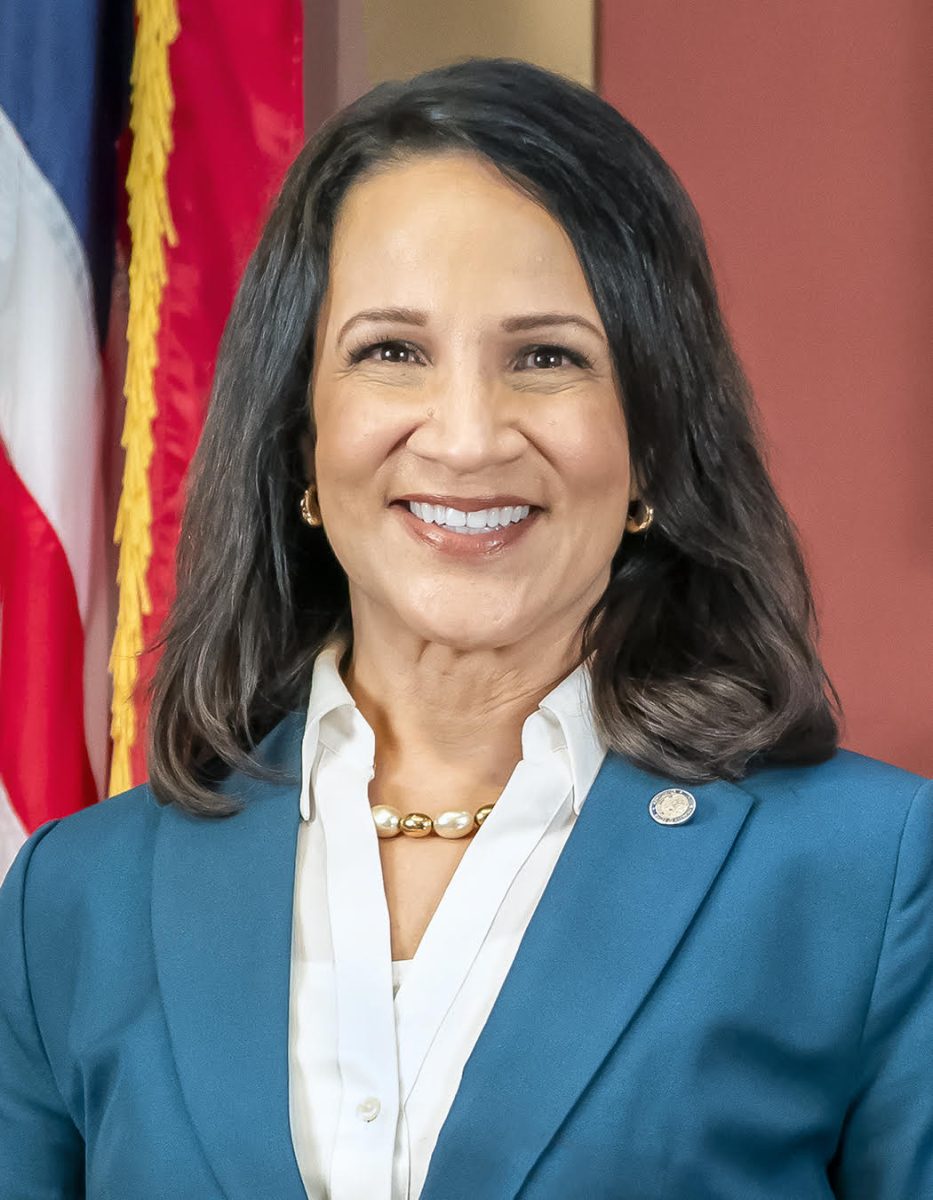Rita Janelle Papakee was last seen Jan. 16, 2015, but her family refused to let her name be forgotten at a march on Friday alongside hundreds of others.
Janelle Papakee is only one of the thousands of Indigenous women who have gone missing or have been murdered. Marchers — including community organizers and Minnesota politicians — braved the cold to show their support for Janelle Papakee and other women like her.
Events on Friday began at 11 a.m. inside the Minneapolis American Indian Center, where marchers and supporters packed themselves inside to hear from various speakers and performers.
Rep. Mary Kunesh-Podein, DFL-New Brighton; North Dakota State Representative Ruth Buffalo; Gov. Tim Waltz; Lt. Gov. Peggy Flanagan and Sanders Institute founder Jane Sanders spoke at the event. Minneapolis Mayor Jacob Frey also dedicated the day to the missing and murdered Indigenous women (MMIW) cause.
“We have an epidemic of missing/murdered Indigenous women and girls and Two-Spirit community members and it has to stop,” Flanagan said in an interview with the Minnesota Daily. “That’s why we’re here: to make sure that our Native women are seen, heard and valued.”
According to a 2018 report, only 116 of the 5,712 reported cases of missing and/or murdered Indigenous women and girls were logged in the DOJ database in 2016. This number is believed to be much higher due to the number of unreported cases.
University of Minnesota graduate Cristine Davidson, an organizer with the Native American Sexual Assault Coalition, said that the march was really about “creating visibility” for MMIW and breaking down misconceptions.
“I think we’re often portrayed as a vulnerable population or, you know, there’s a lot of stereotypes around poverty and addiction. And while that obviously happens in our community, we’re also very strong and resilient,” Davidson said.
Davidson also pointed out that while the event focused on Indigenous women, “all Black and brown bodies” can be subject to the same kind of targeting behind the MMIW crisis.

The march itself flooded the streets of Minneapolis a little after noon, led by school-aged children. Organizers said having young people lead was important for the future of the movement.
Chrissy Pettit, a member of the White Earth Family, and Minneapolis American Indian Center employee Angela Richards, said that they were marching to support MMIW and survivors of sexual violence.
“I know people that have been sexually assaulted so I stand in their voices,” Pettit said. “These are our sisters and we need to speak up. … We need to support those that have been hurt, those [who] are missing and those that may face situations.”
Richards — like many other marchers — donned a red handprint painted across her mouth, a common motif within the movement.
“It symbolizes silencing,” Richards said. “This has been going on for a long time … and not a lot of people are talking about it, so in a way, it symbolizes silencing what’s happening.”
Organizers said that while progress has been made to confront the issue, including the formation of a state task force in 2019, but more work still needs to be done.
“We deserve to be protected,” Flanagan said.









